What is a Step up transformer? A transformer used to step up the main voltage by keeping the current flow stable without any modification is introduced as a step-up transformer. This type of transformer is mostly used in the cases of power transmitting and power-producing stations. This instrument consists of two windings, including primary and secondary sections. The primary section has fewer turns compared with the secondary one.
What is a Step Up Transformer?
A transformer is one of the most typically used electrical equipment. It is the reason why we can use electrical devices the way we do. Even unwittingly, you can rely on these instruments in your day-to-day life. Before we proceed to its applications, we will primarily try to obtain some answers to two significant questions: what is a step up transformer, and how does a step-up transformer work?
A step up transformer is an electrical device that converts low voltage (LV) and high current input from the primary portion of the device to high voltage (HV) and low current output from the secondary section. A step down transformer performs the opposite purpose. A step up transformer is a crucial component of any electrical system. Step Up Transformers are available from a variety of Suppliers And Companies, as well as various manufacturers and distributors, and there are several Step Up Transformers For Sale on Linquip.
There is a complete list of Step Up Transformer services on the Linquip platform that covers all OEM fleets. Linquip vendors can assist you with this. Please call Step Up Transformer Experts in Linquip to learn more about how to connect with a diverse group of Service Providers who consistently deliver high-quality products.
Any transformer fundamentally includes a core and two windings. The two windings are introduced as primary and secondary sections. A step up transformer converts a high-current, low-voltage input to a low-current, high-voltage output applying the principles of magnetic induction. The alternating electric flux in the primary section produces a varying magnetic field in the core. This, in turn, causes an alternating current to be produced in the secondary section. If the number of turns in the secondary winding is higher than those in the primary section, the output value will be greater than the input voltage.
Definition
A transformer is a static electrical instrument employed to transmit the energy in an electrical type between two or several networks. The important function of this device is to modify the alternating current from one voltage to another value. The transformer doesn’t have any sliding component and operates on the magnetic induction principle.
The transformer model is typically designed to step up the voltage. These are generally available in two forms according to the windings, namely step up and step down type. The purpose of the step up transformer is to raise the voltage, while the step down type performance is to step down the input value. The transformer levels can be controlled according to the requirement like VA, KVA, or MVA. This post discusses an overview of the step up transformer.
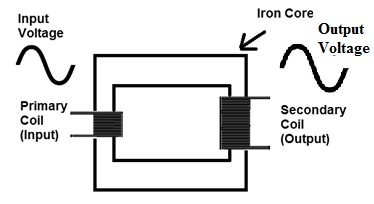
A step up transformer is a form of electrical instrument that transforms the low voltage (LV) and high current input from the primary section of the device to the high voltage (HV) and low current output on the secondary section of the instrument. The reverse of this function is called a step down transformer.
As discussed before, this device is a piece of static electrical equipment that converts the electrical power in the primary winding to the magnetic form in the magnetic core and again to the electricity on the secondary side. With this definition, a step up transformer has a broad variety of cases in the transmission lines and electrical systems.
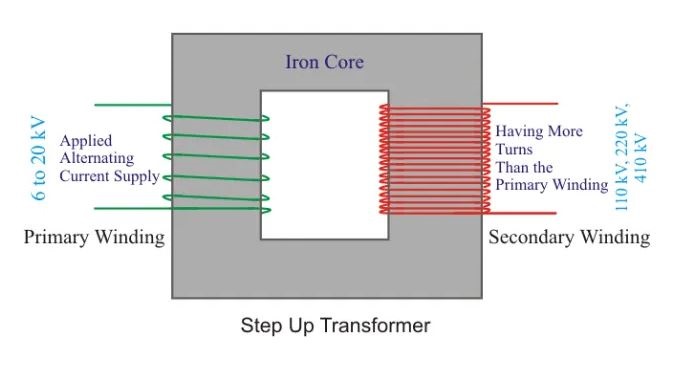
The working frequency and standard power are relatively equal on the primary and secondary sides of the transformer since the transformer is a very effective piece of equipment – while the current and voltage values are generally different.
A transformer supplies galvanic isolation in the electrical network. Because of these two basic properties, the transformer is the most essential component of the electrical circuit and presents reliable and economical transmission and distribution of electrical power.
Principle
The transformer can transmit the electricity in both directions, from LV to HV side as well as inversely. That is the main reason why it can perform as a voltage step down or step up transformer. Both transformer forms have the same design and principle.
Theoretically, we can run any device as a step up as well as a step down kind. It is only based on the direction of the energy flowing.
The HV coils include a great number of turns compared with the LV coils. An LV coil wire has a larger cross-section than the HV line due to the greater current value on the LV section. Generally, we set the LV coils close to the transformer center, and over them, the HV windings are installed.
The turns ratio for a step up transformer is approximately related to the voltage ratio and can be defined as:
n=\frac{{V}_{P}}{{V}_{S}}=\frac{{N}_{P}}{{N}_{S}}
where VP, S are voltages, and NP, S are the turn numbers on the primary and secondary sections, respectively. The primary winding of a step up transformer (LV side) has fewer turns compared to the secondary winding. That means power flows from the LV side to the HV section. The voltage is stepped up from the input voltage to the secondary output voltage.
Construction of a Step Up Transformer
The Construction of a step up transformer is very simple. The step up transformer diagram has some main parts. This construction can be performed using core and windings. Click here to see the construction of this instrument completely.
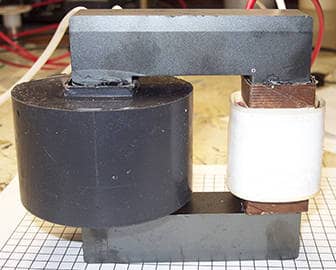
Core
The modeling of the core in the transformer can be performed employing a high permeable substance. This core substance allows the magnetic current to flow with less waste. The core material has a high permeability as compared with the air. So, this core substance will limit the magnetic flux lines through the core material. Therefore, the transformer efficiency can be improved by reducing the transformer wastes.
The magnetic parts allow the magnetic current to flow through them and also, they result in wastes in the core like eddy current waste due to the hysteresis. So, hysteresis and low coactivity substances are selected to create magnetic cores similar to silicon steel or ferrite.
The transformer core can be laminated to hold the eddy current waste at a minimal low so that the core heating can be minimized. Once the core is heated, then there is some waste of electrical power, and transformer efficiency can be reduced.
Windings
The windings in the step up transformer will help to transfer the current which are produced in the transformer. These windings are generally constructed to make the transformer cool and tolerate the conditions of operation and test. The density of the coil at the primary section is thick but consists of fewer turns. Likewise, the density of the coil at the secondary section is thin but contains huge turns. The modeling of this can be performed like the primary section carries less energy as compared to the secondary side.
The winding substance employed in the transformer is Copper and Aluminum. Here, the price of Aluminum is less as compared to Copper, but by utilizing Copper, the transformer life cycle can be improved. There are different forms of laminations present in the transformer, decreasing the eddy currents waste like EE form or EI type.
Working of a Step Up Transformer?
The symbolic representation of a step up transformer is presented below. In the following circuit, the output and input voltages are represented with V2 and V1, respectively. The turns on the coils of the transformer are T1 and T2. Here the output winding is secondary while the input one is primary.
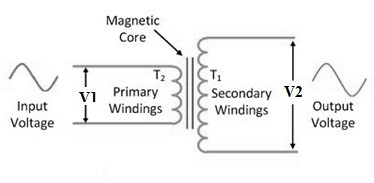
The output value is large compared to the input value since the turns of the coil on the primary side are less than the secondary one. While the alternating current moves across a transformer, then the current will transform in one direction, stops, and modifies the direction to transform in another direction.
The current flow will produce a magnetic flux in the area of the winding. The directions of the magnetic poles will be varied when the current flow modifies its direction.
The voltage is produced in the windings across the magnetic field. Similarly, the voltage will be produced across the secondary winding when it is located in a moving magnetic flux is introduced as the mutual induction effect. Therefore, the AC in the primary section produces a moving magnetic flux so that voltage can be produced on the secondary side.
The main relationship between the voltage and the number of turns in every winding can be obtained using this step up transformer formula based on its main diagram.
\frac{{V}_{2}}{{V}_{1}}=\frac{{T}_{2}}{{T}_{1}}
Where,
- ‘V2’ is the voltage in the secondary winding
- ‘V1’ is voltage is the primary winding
- ‘T2’ turns on the secondary winding
- ‘T1’ turns on the primary winding
This transformer equation can help you simply evaluate the transformer turns ratio and whether the instrument is a step down or step up transformer.
The most important usage of a step up type is a Generator Step Up (GSU) device employed in all generating plants.
Those transformers commonly have great turn ratio values. The voltage value generated in energy production is improved and prepared for long-distance transmission applications.
The energy created in a generating plant is at high current and low voltage values. According to the generating plant form, the GSU device has a standard primary value from 6 up to 20 kV.
The standard value of the GSU device in the secondary section can be 110 kV, 220 kV, 410 kV according to the energy transmission network connected to the secondary side of the GSU. The current value on the primary section is commonly very large and, depending on the standard transformer power, can attain even 30000 A.
This current is not potential for power transmission and has to reduce due to the transmission power wastes (RI2). Long-distance power transmission would not be practical. Besides, the GSU device also produces galvanic isolation between the electrical network and the generator.
Different Factors of a Step Up Transformer
Several different factors require to check when choosing the step up transformer. The most important of them are:
- Transformers Rating
- Transformers Efficiency
- Cooling Medium
- Number of Phases
- Material of Windings
Advantages of a Step Up Transformer
The advantages of a step up transformer are listed below:
- Using in commercial and residential places
- Quick Start
- Maintenance
- Power Transmitter
- Efficiency
- Continuous Working
Disadvantages of a Step Up Transformer
The disadvantages of the step up transformer are as the following.
- Needing a cooling system
- Operation just for Alternative Current
- The huge size of these transformers
Applications of Step-up Transformer
Now that we understand how a step up transformer operates let us have a brief look at its main applications. The important applications of step up transformer in real life are presented below:
Electric Power Distribution
The electrical energy that is produced should travel miles before it reaches our home. Because the conditions are not commonly ideal, there is a waste of energy along these lines. This waste is directly related to the square of the current moving across the lines (RI2). The power of the electricity being created is a product of low voltage and high current. The wastes that would happen as a result would make it impractical to transfer electricity to any region that is far away from the generating source.
In this case, a step up transformer can convert this low voltage input into a low-current, high-voltage output. This output will then not suffer a waste that high. This makes transformers an important component of the power distribution network.
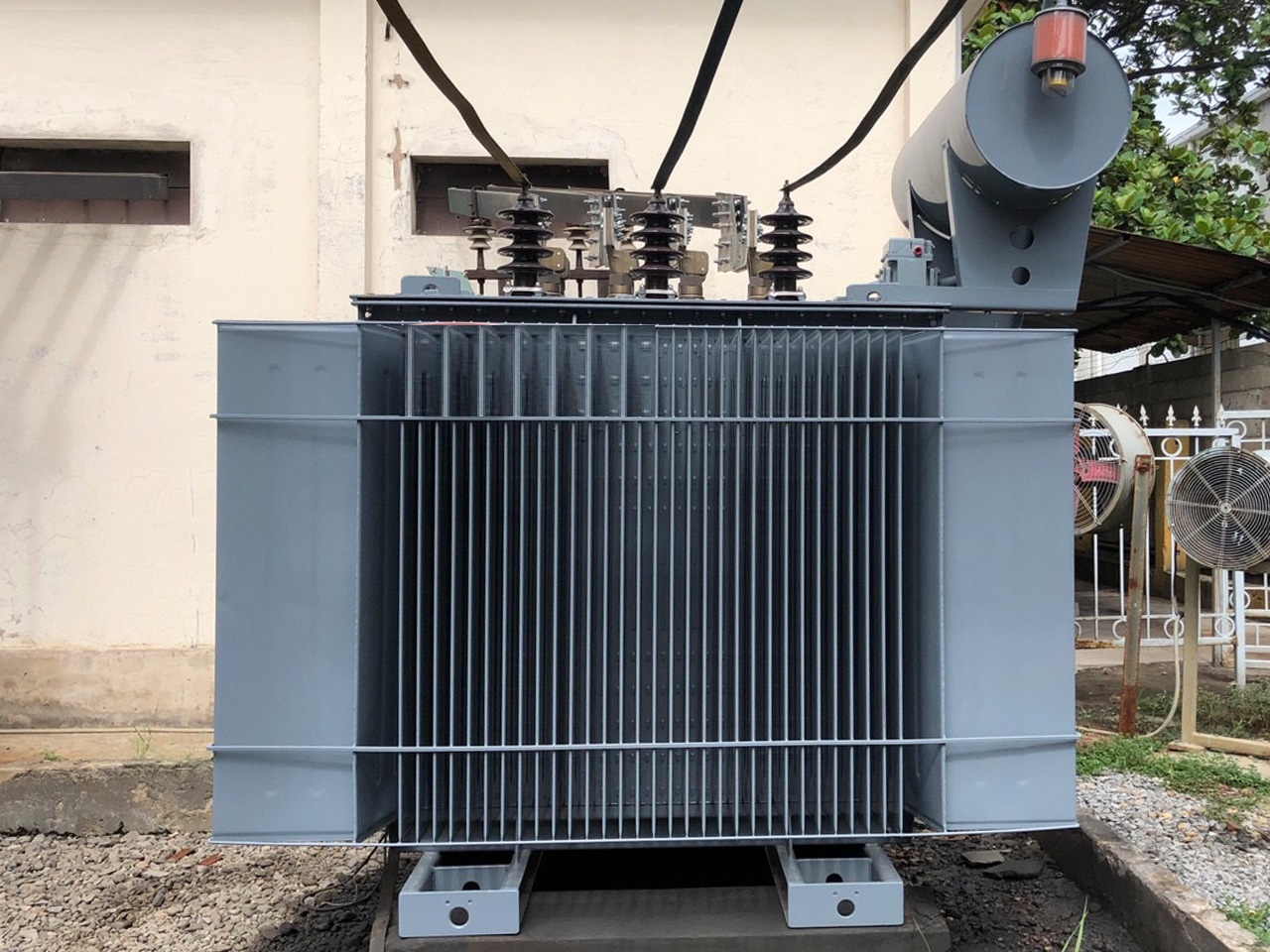
Starting Electrical Appliances
Even though the electrical power being transformed has a high voltage, it is stepped down when it is provided to our home. However, this is performed to make it appropriate for general use; there are special devices like microwaves, electrical motors, X-ray machines, etc. that need a high voltage for starting.
A step up device is employed to transform the present power source to a suitable voltage. This device is typically available as a part of the appliance itself. Although, some devices like X-ray machines sometimes need an external transformer.
Other applications of step up transformers are summarized below:
- These devices are applicable in electronic systems like stabilizers and inverters to regulate the voltage from low to high.
- They are used for distributing electrical energy.
- They are applied to modify the high voltage in the transmission network, which is produced from the alternator.
- These transformers are also used to run an electric motor, oven, etc.
- They are utilized to boost electronic devices.
- A small step up device can be used in electronic devices where voltage boosting is needed. But nowadays, in modern electronic instruments, power electronic networks are more frequently employed due to the smaller weight and dimension.
- A giant power step up device is used as a GSU transformer for stepping up the produced energy to a higher voltage value for the efficient transmission of electrical energy.
For Devices Manufactured in Another Country
For example, the power source limitation in Canada is a 120V, 60Hz source. Although, this is not a universal amount. Some regions have their own limits. If we buy any electrical instrument from a country, it will be constructed as per the characteristics in that country. In case we have purchased any electrical device from a region whose main voltage is higher than 120V, we will require to use a step up transformer to modify the voltage to a rate that is desirable for the appliance.
Choosing the Best Transformer
As evident from its uses, a step up device is an integral component of our life. Sometimes its application may be clear, such as in the power distribution lines, and sometimes it may not be so obvious. But whether we consider it or not, it is responsible for the smooth performance of all the electrical instruments.
As such, we need to get the step up transformer from a trusted constructor with an appropriate track record. If you are looking to choose the best step up transformer, then you must definitely consider getting yours from such constructors.
Summary
Thus, this is all about the step up transformer concept. The performance of the step up form is to improve the voltage as well as reduce the current strength. In this type, the number of coils across the secondary section is great as compared to the primary side. Therefore, the wire in the primary winding is strong when compared with the secondary side. These devices are essential in transmission and power generation networks since they transmit the energy to far-off regions.
Download step up transformer PDF
- Difference between Power Transformer and Distribution Transformer
- What is Electrical Transformer?
- What is Auto Transformer? Advantages & Application
- What is a Distribution Transformer?
- What is the Efficiency of Transformer?
- What is Step-Down Transformer and Its Application?
- What is a Single Phase Transformer?
- What is Power Transformer?
- What is the Current Transformer?
- What is Potential Transformer?
- What is the Equivalent Circuit of Transformer?

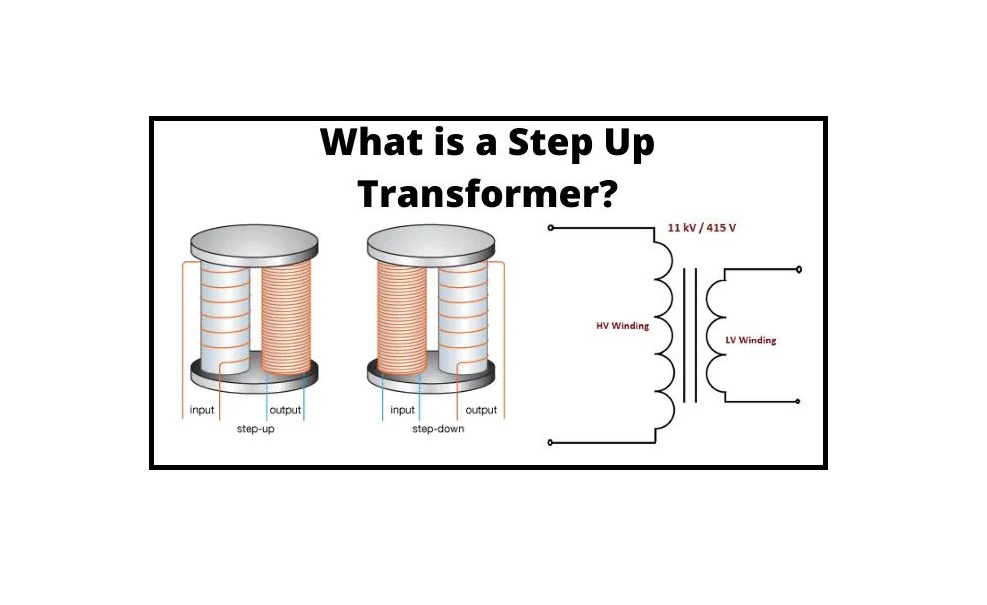


great work
Thanks for sharing your experience with us! You can also visit our industrial directories, where you can find thousands of various industrial equipment based on your application and demand.